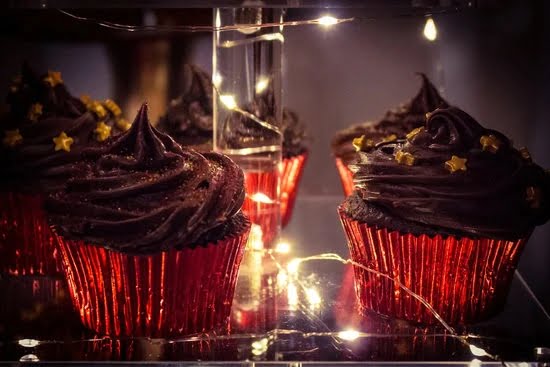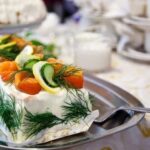Cake decorating sugar and sprinkles are popular edible decorations that add a burst of color and dazzle to any dessert. From birthday cakes to cupcakes, these sweet adornments have become an essential part of the baking world. However, it is crucial to understand how long cake decorating sugar and sprinkles can last for optimal freshness and quality in your creations.
When it comes to creating visually appealing desserts, cake decorating sugar and sprinkles play a vital role. They not only add vibrant colors but also provide texture and excitement to the final product. Whether you’re a professional baker or an at-home enthusiast, having a good understanding of their shelf life is key to maintaining the aesthetics and taste of your culinary masterpieces.
Cake decorating sugar encompasses various forms such as granulated sugar, sanding sugar, and even lustrous pearls that bring a touch of elegance. Sprinkles, on the other hand, come in many shapes and sizes like jimmies, nonpareils, or fun-shaped designs that celebrate every occasion. The market offers endless choices when it comes to these decorations, making it important to know how long they can last before losing their appeal.
In order to preserve the quality of cake decorating sugar and sprinkles, several factors need consideration. Proper storage conditions regarding moisture exposure, heat levels, air circulation are all crucial elements that influence their shelf life. Understanding these factors will allow you to create stunning desserts while preventing wastage due to expired or spoiled decorations.
In this article, we will dive into the world of cake decorating sugar and sprinkles in detail. From exploring different types available in the market to discussing their specific shelf lives, we will equip you with valuable knowledge on storing techniques and signs of spoilage. By understanding how long these edible decorations can last and implementing proper storage methods, you’ll be able to enhance your baking endeavors with fresh and visually captivating results.
What are cake decorating sugar and sprinkles
Cake decorating sugar and sprinkles are popular edible decorations used to enhance the visual appeal of desserts. These delightful additions come in a variety of different types and varieties, allowing cake decorators to get creative and add that special touch to their creations.
Cake decorating sugar refers to finely granulated or crystallized sugar that is specifically designed for decorating purposes. It comes in various forms, including granulated sugar, sanding sugar, and sugar pearls. Granulated sugar is the most common type and is often used for coating baked goods or adding texture to frosting. Sanding sugar has larger crystals which add a sparkling effect to desserts. Sugar pearls are small spherical decorations that can be used individually or clustered together to create elegant designs.
Sprinkles, on the other hand, are small decorative elements that come in a wide range of shapes, sizes, and colors. The most commonly known sprinkle types include jimmies (or vermicelli), nonpareils (tiny round sprinkles), and shaped sprinkles. Jimmies are long, cylindrical sprinkles that add a playful touch to cakes and cookies.
Nonpareils are the smallest sprinkles with a smooth texture that can be used for delicately decorating desserts. Shaped sprinkles come in various forms such as stars, hearts, or seasonal shapes like trees or pumpkins.
Both cake decorating sugar and sprinkles offer endless possibilities when it comes to design and creativity in cake decoration projects. With their diverse range of options available in the market today, cake decorators can find the perfect combination of colors, textures, and shapes to bring their confections to life.
Factors affecting the shelf life
Cake decorating sugar and sprinkles are essential in enhancing the visual appeal of desserts. However, it is important to understand their shelf life in order to ensure the quality and safety of these edible decorations. Several factors can affect the longevity of cake decorating sugar and sprinkles, including proper storage conditions, exposure to moisture, heat, and air.
Storage Conditions
One of the key factors that can impact the shelf life of cake decorating sugar and sprinkles is the storage conditions. It is crucial to store them in a cool, dry place away from direct sunlight.
Moisture is the biggest enemy as it can cause sugar to clump or sprinlees to become soft, making them less desirable for decoration purposes. To avoid moisture absorption, it is recommended to store them in airtight containers or resealable bags with all excess air removed.
Exposure to Heat
Another factor that can affect the shelf life of cake decorating sugar and sprinkles is exposure to heat. High temperatures can cause sugar to melt or stick together, while chocolate-based sprinkles might lose their shape or become deformed. It is essential to keep these decorations away from heated appliances or areas near ovens or stovetops.
Exposure to Air
Exposure to air can also negatively impact the shelf life of cake decorating sugar and sprinkles. Oxygen in the air can lead to oxidization, causing discoloration and potential degradation of flavor and texture over time. It is advisable to use airtight containers or resealable bags with minimal air contact when storing these decorations.
Understanding these factors that affect the shelf life of cake decorating sugar and sprinkles is crucial for maintaining their quality and appearance. Proper storage techniques are vital for maximizing their longevity so that they can be used for future baking projects without any compromise on taste or visual appeal.
Shelf life of cake decorating sugar
Cake decorating sugar is an essential ingredient in enhancing the visual appeal of desserts. Different forms of cake decorating sugar, such as granulated sugar, sanding sugar, and sugar pearls, are commonly used to add sparkle, texture, and color to cakes, cookies, cupcakes, and other confections. However, it is important to understand the shelf life of these decorative sugars to ensure their quality and effectiveness.
Granulated Sugar
Granulated sugar is the most commonly used form of cake decorating sugar due to its versatility. When stored properly in an airtight container in a cool and dry place away from direct sunlight or heat sources, granulated sugar can last indefinitely. Its high resistance to moisture helps maintain its quality over time. However, it is important to check for any signs of spoilage such as clumping or discoloration before using it in cake decoration projects.
Sanding Sugar
Sanding sugar has larger crystals compared to granulated sugar, adding extra shine and texture to baked goods. This decorative sugar also has a longer shelf life when stored properly. Generally, sanding sugar can last for up to two years or even longer if kept in a sealed container in a cool and dry environment. It is advisable to avoid exposing sanding sugar to humidity or moisture as it can cause the crystals to become sticky or dissolve.
Sugar Pearls
Sugar pearls are small spherical decorations that resemble actual pearls. These delicate decorative sugars are often used for elegant designs on cakes and pastries. The shelf life of sugar pearls may vary based on their ingredients or manufacturing processes. In general, when stored correctly in airtight containers in a cool and dry place away from direct sunlight or humidity, sugar pearls can last for up to one year or more.
Understanding the specific shelf life of different types of cake decorating sugars allows decorators to plan their projects effectively while ensuring the quality and freshness of their decorations. By following proper storage techniques and regularly checking for signs of spoilage, decorators can maintain a stock of cake decorating sugar that will consistently enhance the visual appeal of their creations.
Shelf life of cake decorating sprinkles
Cake decorating sprinkles are a popular choice for adding a colorful and festive touch to desserts. Whether it’s jimmies, nonpareils, or shaped sprinkles, these tiny delights can elevate the visual appeal of any cake or pastry. However, like any other food item, sprinkles also have a limited shelf life.
The expected lifespan of different types of cake decorating sprinkles can vary based on their ingredients and manufacturing processes. Jimmies, which are long and thin cylindrical-shaped sprinkles, typically have a longer shelf life compared to other varieties. When stored properly in a cool and dry place, jimmies can last up to 2 years.
On the other hand, nonpareils, which are small round sprinkles often referred to as “hundreds and thousands,” may have a slightly shorter shelf life. Due to their delicate nature and being more prone to color bleeding when exposed to moisture, nonpareils usually have a shelf life of around 1 year when stored correctly.
Shaped sprinkles are another popular choice among cake decorators. These decorative shapes come in various designs such as hearts, stars, flowers, or seasonal themes like pumpkins or snowflakes. The lifespan of shaped sprinkles can vary depending on the ingredients used and the manufacturing process. It is recommended to check the packaging for specific expiration dates as some shaped sprinkles may have added perishable elements that could reduce their shelf life.
To ensure that your cake decorating sprinkles last as long as possible, it’s essential to store them properly. Keep them in an airtight container away from moisture and direct sunlight. Extreme temperature fluctuations can also affect their quality, so storing them in a cool and dry place is crucial.
| Sprinkle Type | Expected Shelf Life |
|---|---|
| Jimmies | Up to 2 years |
| Nonpareils | Around 1 year |
| Shaped Sprinkles | Varies based on ingredients and manufacturing process. Check packaging for specific expiration dates. |
Understanding the expected shelf life of different types of cake decorating sprinkles is essential for ensuring that you use them at their best quality. By following proper storage techniques and being mindful of their expiration dates, you can enjoy vibrant and visually appealing desserts for your special occasions or everyday treats.
Remember to check for signs of spoilage before using sprinkles that have been stored for a long time and discard them if necessary to avoid compromising the taste and safety of your creations.
Proper storage techniques
Proper storage techniques are crucial in maximizing the shelf life of cake decorating sugar and sprinkles. By following these tips and tricks, you can ensure that your edible decorations stay fresh and vibrant for longer periods of time. Here are some valuable guidelines to help you store your cake decorating sugar and sprinkles effectively:
- Choose suitable containers: It is important to select appropriate containers that provide an airtight seal. This helps to prevent moisture, air, or pests from getting into your sugar and sprinkles, which can lead to spoilage. Glass jars with rubber seals or plastic containers with secure lids are excellent options.
- Optimal storage temperatures: Store your cake decorating sugar and sprinkles in a cool and dry place away from direct sunlight. High temperatures can cause the sugar to clump together or melt, while excessive humidity can make the sprinkles sticky or result in color bleeding.
- Avoid common mistakes: There are some common mistakes that people often make when storing their cake decorating supplies. First, avoid transferring your sugar and sprinkles into non-airtight bags or containers as this can expose them to moisture and air. Additionally, be cautious not to place them near sources of heat such as ovens or stovetops.
To further maximize the shelf life of your cake decorating sugar and sprinkles, you can also consider additional methods:
- Utilize desiccant packs: Desiccant packs help absorb any excess moisture that may enter the container over time. Place one or two packs in the storage container to maintain a dry environment.
- Vacuum-sealing: If possible, vacuum-seal your supplies before storing them. This method removes air from the packaging, reducing the risk of oxidation and prolonging freshness.
- Refrigeration for certain types: While most varieties of cake decorating sugar and sprinkles do not require refrigeration, there are exceptions. Some delicate or perishable items like shaped chocolate decorations may benefit from being stored in the refrigerator to maintain their shape and texture.
By employing these proper storage techniques and exploring additional preservation methods, you can extend the shelf life of your cake decorating sugar and sprinkles, ensuring that they remain vibrant and appealing for all your future cake decoration projects.
Signs of spoilage
When it comes to cake decorating sugar and sprinkles, it is crucial to be aware of the signs that indicate they have gone bad. Using spoiled decorations can not only affect the taste and texture of your desserts but also compromise their visual appeal. In this section, we will educate readers about the telltale signs of spoilage in cake decorating sugar and sprinkles, and provide guidance on when it is best to discard them.
One of the most common signs that cake decorating sugar and sprinkles have gone bad is a change in color. If you notice any discoloration or fading in the decorations, it is a clear indication that they are no longer fresh. For example, vibrant colored sprinkles may become dull or pale over time.
Similarly, granulated sugar might develop brown or yellow spots due to moisture exposure. It’s important to note that natural colored decorations may fade more quickly than those treated with artificial dyes.
Texture is another important factor to consider when assessing the freshness of cake decorating sugar and sprinkles. If you find any clumps, lumps, or uneven textures in your decorations, it suggests moisture has been absorbed, causing them to lose their quality. Cake decorating sugar should always be free-flowing without any clumps when stored properly. Sprinkles should maintain their individual shape and not become stuck together.
Lastly, changes in taste can also indicate spoilage in cake decorating sugar and sprinkles. While these decorations do not usually have a strong flavor themselves, they can absorb odors from their surroundings if not stored properly. If you notice any off-putting or unusual tastes when using them, it’s best to discard them as they may have absorbed flavors from nearby food items or storage containers.
| Signs of Spoilage | Indications |
|---|---|
| Color changes | Discoloration or fading in decorations |
| Texture changes | Clumps, lumps, or uneven textures in decorations |
| Taste changes | Off-putting or unusual flavors when using the decorations |
Extending the shelf life
To ensure that your cake decorating sugar and sprinkles last as long as possible, it is important to take proper storage measures. Here are some creative suggestions on how to extend the shelf life of these decorative edibles:
- Vacuum-Sealing: Invest in a vacuum sealer to remove any air from the packaging before sealing it. This method helps prevent moisture and oxygen exposure, which can lead to spoilage. By removing these elements, you can significantly prolong the freshness and integrity of your cake decorating sugar and sprinkles.
- Utilizing Desiccant Packs: Desiccant packs are small sachets filled with moisture-absorbing materials such as silica gel or activated carbon. Placing a few of these packs inside the container where you store your decorations can help absorb excess moisture and keep them dry. This will prevent clumping or sogginess and thereby extend their shelf life.
- Refrigerating Properly: While some types of cake decorating sugar and sprinkles may not require refrigeration, certain varieties can benefit from being stored in the refrigerator. For example, if you have perishable toppings like fresh fruit-flavored sprinkles or dairy-based decorations, refrigeration can help maintain their freshness for longer periods. However, make sure to keep them in airtight containers to prevent absorption of odors from other foods.
Remember that even with these storage techniques, there will come a time when your cake decorating sugar and sprinkles will eventually expire. It is essential to regularly check for signs of spoilage like changes in color, texture, or taste before using them in your recipes.
By employing these creative suggestions for extending the shelf life of cake decorating sugar and sprinkles, you can ensure that your decorative creations remain vibrant and appealing for all your baking projects.
Conclusion
In conclusion, understanding the shelf life of cake decorating sugar and sprinkles is crucial in achieving the best possible results in cake decoration projects. Throughout this article, we have explored the different types of cake decorating sugar and sprinkles available in the market, as well as the various factors that can affect their longevity. From proper storage techniques to identifying signs of spoilage, we have provided valuable information to help you make informed decisions when using these edible decorations.
By knowing how long different forms of cake decorating sugar and sprinkles can last when stored properly, you can ensure that your desserts not only look visually appealing but also taste fresh and delicious. It is important to remember that improper storage conditions such as exposure to moisture, heat, and air can drastically reduce their shelf life. Therefore, using suitable containers, maintaining preferred storage temperatures, and avoiding common mistakes are essential in maximizing their longevity.
Additionally, we have offered creative suggestions on how to extend the shelf life of cake decorating sugar and sprinkles. Vacuum-sealing, utilizing desiccant packs or refrigerating them properly are effective methods to prolong their freshness. However, it is vital to pay attention to any changes in color, texture, or taste that may indicate spoilage. When in doubt, it is always best to discard them rather than risk compromising the quality and safety of your desserts.
Frequently Asked Questions
How long do sugar cake decorations last?
The longevity of sugar cake decorations largely depends on the specific type and quality of the decorations, as well as the storage conditions. Generally, most sugar cake decorations have a relatively long shelf life if stored properly. Sugar paste or fondant decorations can last for several weeks when stored in an airtight container, away from direct sunlight and moisture.
On the other hand, pre-made sugar flowers or delicate edible shapes might have a shorter lifespan due to their intricate nature. It’s recommended to check the packaging or consult the manufacturer for any specific recommendations regarding storage and shelf life.
How do you know when sprinkles go bad?
Unlike perishable food items, sprinkles are mainly made up of sugar and food coloring, which gives them a longer shelf life. However, over time, sprinkles can become stale or lose their vibrant colors due to exposure to air and humidity.
Signs that sprinkles may have gone bad include clumping together, unusual texture like hardened or sticky consistency, or a noticeable change in color or taste. If your sprinkles still appear fresh and maintain their distinct shape and color without any signs of spoilage, they are likely still good to use.
Does decorator sugar go bad?
Decorator sugar is essentially regular granulated sugar that has been tinted with food coloring to create vibrant colors suitable for decorative purposes. Granulated sugar itself has an indefinite shelf life if stored in a cool and dry environment away from moisture or contaminants that could lead to clumping. However, decorator sugar may lose its vibrancy over time due to exposure to light and air, causing the colors to fade gradually.
While faded decorator sugar doesn’t necessarily mean it has gone bad or spoiled since it is still edible, its aesthetic appeal and impact on decorating baked goods may diminish. It’s always best practice to store decorator sugar in an airtight container away from light sources to preserve its vibrant colors for as long as possible.

Welcome to our cake decorating blog! My name is Destiny Flores, and I am the proud owner of a cake decorating business named Cake Karma. Our mission is to provide delicious, beautiful cakes for all occasions. We specialize in creating custom cakes that are tailored specifically to each customer’s individual needs and tastes.





